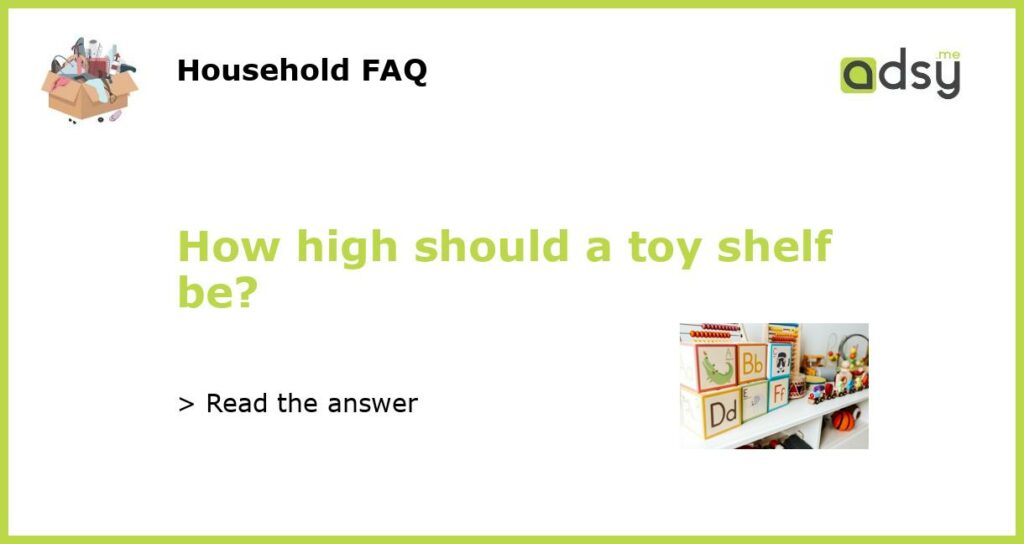Determining the Ideal Height for a Toy Shelf
When it comes to organizing a child’s playroom or bedroom, a toy shelf is an essential piece of furniture. But how high should a toy shelf be? The height of a toy shelf depends on several factors, including the child’s age, height, and accessibility. Let’s take a closer look at these factors to determine the ideal height for a toy shelf.
Consider the Child’s Age and Height
One of the main considerations when deciding on the height of a toy shelf is the child’s age and height. Younger children, such as toddlers and preschoolers, will benefit from a lower shelf that they can easily reach. The shelf should be within their arm’s reach so that they can take out and put away toys on their own. As children grow taller, the shelf can be adjusted to a higher height to accommodate their increasing height.
Prioritize Accessibility and Safety
Accessibility and safety are crucial factors to consider when determining the height of a toy shelf. The shelf should be at a height that allows the child to easily access and retrieve toys without the need for climbing or reaching too far. This not only promotes independence and a sense of ownership over their toys but also reduces the risk of accidents or injuries caused by climbing on furniture or stretching too far to reach items on a high shelf.
Consider Ergonomics and Storage Needs
In addition to the child’s age and accessibility, it’s important to consider the ergonomics and storage needs when determining the height of a toy shelf. The shelf should be at a height that allows the child to see and reach toys without straining their neck or shoulders. It should also provide enough storage space for all the toys, taking into account factors such as the size and number of toys, as well as any special storage requirements (e.g., bins, baskets, or compartments).
Finding the Right Balance
Finding the right balance for the height of a toy shelf involves considering both the child’s needs and the overall layout and design of the room. It’s important to choose a height that is appropriate for the child’s age and height, promotes independence and safety, and allows for easy access and storage. Ideally, the shelf should be low enough for the child to reach toys without assistance but also high enough to prevent them from easily climbing or toppling the shelf. Adjustability is another factor to consider, especially if the child is still growing or if the room layout might change in the future.






